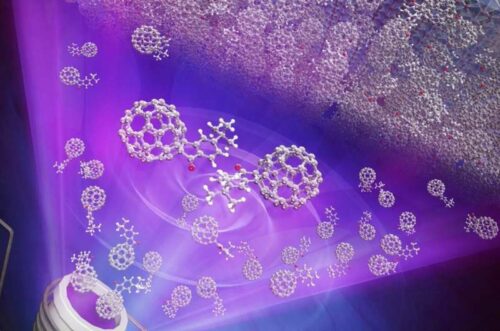Researchers at Nagoya University have developed perovskite and fullerene-based solar cells, offering higher efficiency, flexibility, and durability.

The next generation of solar cells is likely based on perovskite, a crystal material known for its high efficiency, even in generating electricity indoors under weak light. These cells are lighter and more flexible than traditional silicon solar cells, making them ideal for vertical installations like windows and walls. Fullerene (C60), a carbon-based semiconductor with a distinctive soccer ball shape, is a key component of their unique properties. Fullerenes can channel electrons to generate power, and by attaching organic molecules to them, researchers can create derivatives with enhanced electronic functions, which are crucial for organic electronics.
A team spearheaded by scientists at Nagoya University in Japan has developed a fullerene indanone-based material (FIDO) to enhance the longevity of next-generation solar cells. Overcoming durability challenges has been a significant obstacle to their practical use and marketability.
Matsuo and his team utilized FIDO to create an amorphous material for their solar cell film, diverging from the typical crystalline structure in current silicon solar cells. Amorphous materials have a less ordered structure, enabling the engineering of specific properties by tweaking deposition conditions and customizing the film’s electrical characteristics to suit solar cell technology.
The researchers discovered several advantages in comparing their new technology with a standard film. Their film was more efficient and stable, and unlike conventional films, its properties remained intact without any decline in conversion efficiency.
The team envisions a variety of applications for their technique. They believe their fullerene derivatives have potential applications beyond perovskite solar cells, including photoelectric conversion elements like organic photodiodes and organic photodetectors. They emphasize the importance of organic photodetectors in improving the resolution of imaging sensors in cameras. They foresee their use in fingerprint authentication on smartphone displays, allowing for unlocking from any part of the screen touched by a finger.
Reference: Qing-Jun Shui et al, Evaporable Fullerene Indanones with Controlled Amorphous Morphology as Electron Transport Layers for Inverted Perovskite Solar Cells, Journal of the American Chemical Society (2023). DOI: 10.1021/jacs.3c07192






